There are hundreds of Italian ghost towns scattered across the country. Jenny Oldaker explores their silent streets and tumultuous stories, and discovers the initiatives giving some of them a new lease of life.
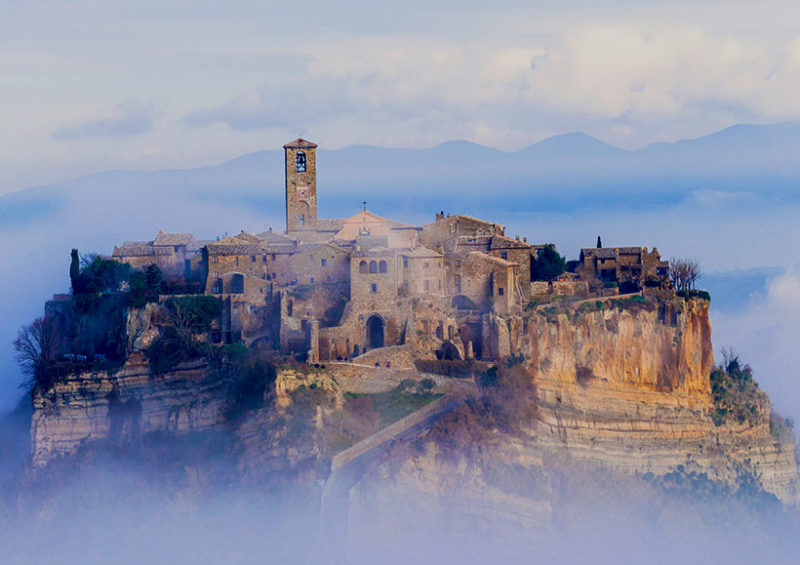
Think about Italy’s history and what comes to mind? The rip-roaring reign of the dynamic Ancient Romans? The cultural and artistic innovations of the Renaissance? The turbulent machinations of the Risorgimento?
All these colourful eras are icons of the country’s past, proudly worn in the grand monuments, fine art and iconic landmarks across Italy’s cities. But there’s another side to Italy’s historic legacy, and it’s the antithesis of these bustling sites. Allow us to present the Italian ghost town…
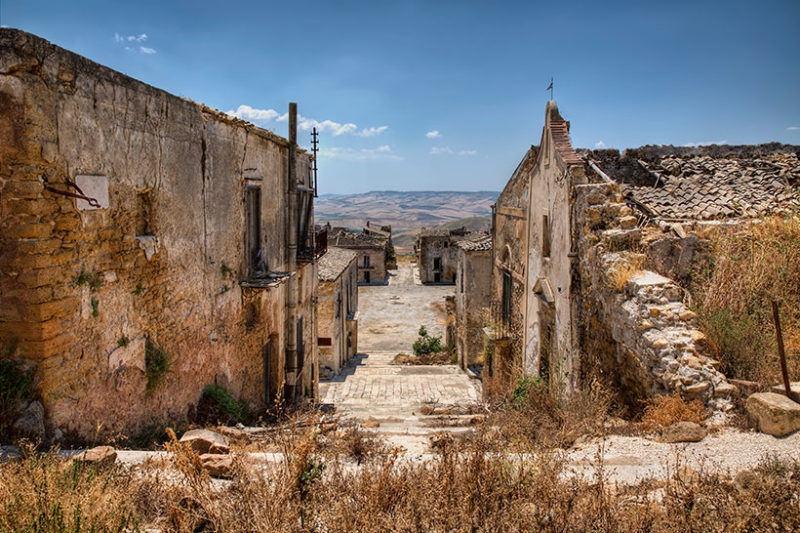
Italy is home to hundreds of towns and villages that have been abandoned and left to decay over the centuries. Peppered with skeleton carcasses of buildings, tumbledown walls and moss-encrusted brickwork, these ghost towns are eerie, atmospheric places that litter the peninsula and its islands. Also known as città fantasma or città morte, all of them are subject to differing levels of abandonment and decay, and each with its own story of decline to tell.
Why were these Italian ghost towns abandoned?
What happened to empty these once thriving places of life? There are countless tales behind the ghost towns of Italy, but more often than not, geological disaster plays a part. Landslides, earthquakes and floods see settlements abandoned for safer ground. Sometimes, a new iteration of the town springs up just a little way away, as in the case of Campania’s Apice Vecchio.
Dubbed ‘the Pompeii of the 20th century’, this elegant town looks, at first sight, perfectly ordinary. Delve a little closer, however, and you’ll see the rubble, artefacts of daily life and signs of the lives that were once lived here, strewn among the vegetation that is gradually reclaiming the town.
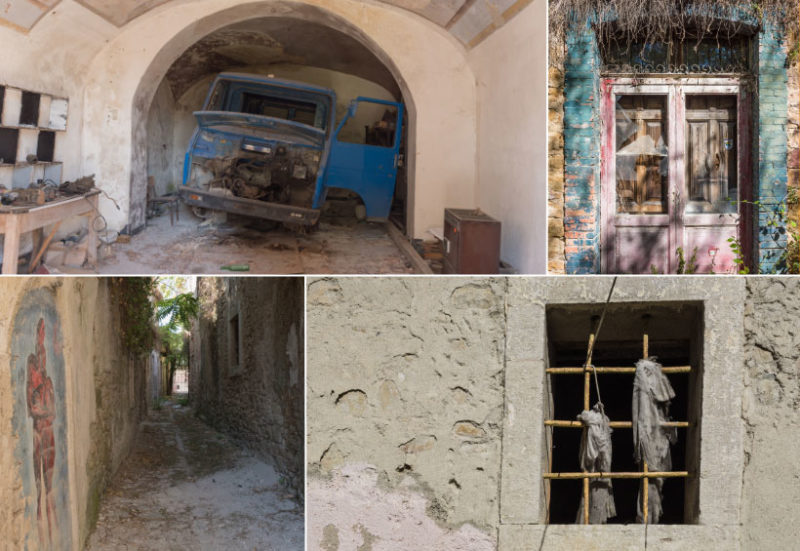
The reason no one lives here anymore? A major earthquake in 1962, which saw Apice’s 6,500 residents swiftly evacuated from the town, leaving their lives in this snapshot of time, and many moving to the nearby Apice ‘Nuovo’.
This is not the only ghost town to have been engendered by an earthquake. Many parts of Italy are at the mercy of seismic activity, and there are other ghost towns whose status was sealed with a tremor, too.
Poggioreale, in western Sicily, for example, is another ‘modern Pompeii’ that seems frozen in time since the Belice Valley earthquake struck in 1968. It killed 200 residents and destroyed most of the buildings.
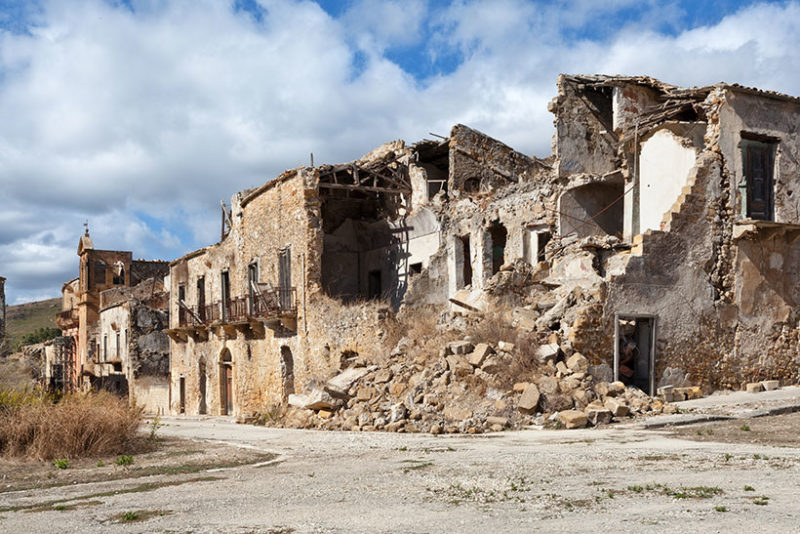
In the years to follow, it was deemed uneconomical to try to recover the town. Today, it remains a silent, eerily beautiful place, littered with rubble and the remains of its previous inhabitants’ lives, a kind of open-air museum and a memorial to those lost.
Beyond earthquakes: Floods and economic decline in Italian ghost towns
Along with such calamitous earthquakes, other natural disasters have contributed to Italy’s high number of ghost towns. Ischiazza village in the Dolomites was destroyed by a flood in 1966, while the ancient town of Craco in Basilicata suffered a series of landslides in the mid-20th century, which proved the final death knell for this town that was already beginning to dwindle as a result of poor local working conditions.
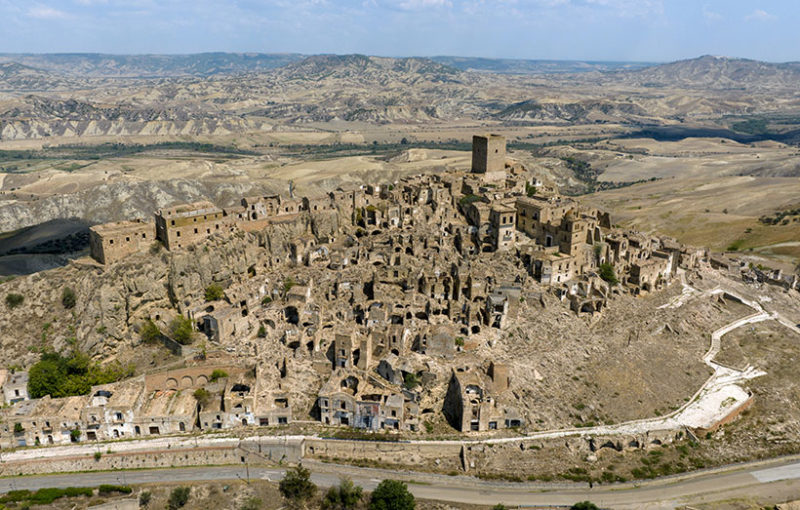
More recently, its spectacular location and mysterious old streets have attracted location scouts, and it has appeared in several movies, from Mel Gibson’s The Passion of the Christ to Quantum of Solace in the James Bond franchise.
Sometimes, economic reasons are to blame for residents’ hasty departure, such as Sardinia’s Villaggio Minerario Asproni, which was built at the end of the 1800s and thrived as a mining community, buoyed by the rich seam of minerals in the local area and named after the founder Giorgio Asproni. When the quarry ran dry, however, and work declined in the 1930s, everyone left.
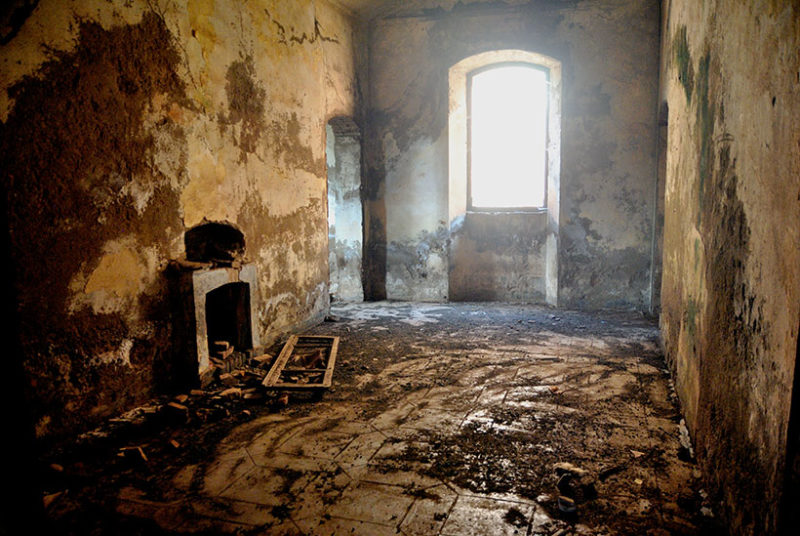
Today, the village is entirely empty, though legend tells of the ghost of local man Luigi Toro, who still roams among the ruins, a tale that adds an extra chill to this desolate place.
Bringing Italian ghost towns back to life
Some of these places have been so utterly reclaimed by nature or have such hazardous access that it’s all but impossible to get close to them. Others, however, can be visited and present an atmospheric way to experience this other side of Italy.
Some choose to wander the quiet streets of Villaggio Asproni. Others may take a guided tour of ‘The Dying City’ of Civita di Bagnoregio in Tuscia. The latter sits in a precarious position, built on a hill of crumbling tufa. As the town is slowly eroding, it can only be accessed by visitors on foot via a bridge.
These are just two of the città morte that are accessible to tourists. Many more of Italy’s ghost towns and villages can be visited. While they can be found all over the country, the majority are in the country’s more impoverished – and earthquake-prone – south.
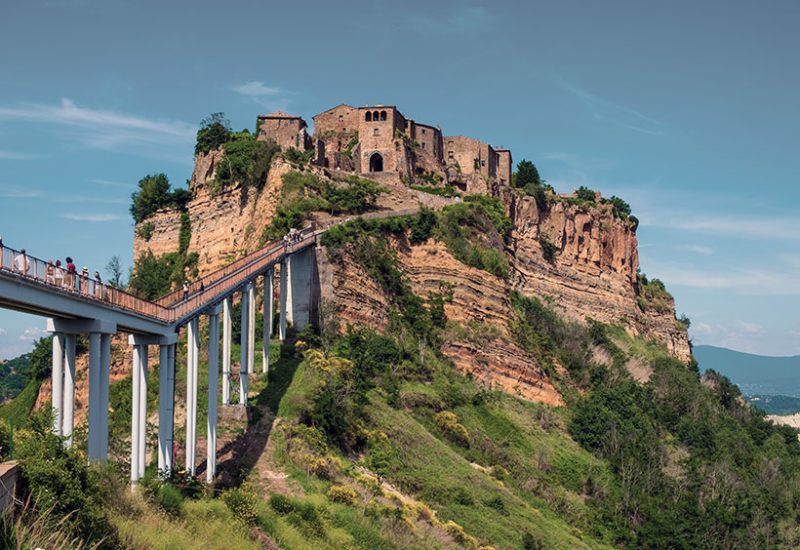
There are those who have criticised Italy’s successive governments and local municipalities for not doing more to re-establish these places. However, thanks largely to the efforts of proactive or deep-pocketed individuals, there have been moves in recent years to bring some of these places back to life.
Bussana Vecchia in Liguria is one of the best known. Yet another earthquake victim that was abandoned in 1887, it sat vacant and decaying for decades until it was discovered by a community of artists in the 1960s. Since then, its new inhabitants have partially rebuilt the town. However, this restoration involved regular legal tussles with the authorities over the rightful ownership of the buildings and safety issues.
From ruins to Renaissance
The ‘International Artists’ Village’ is now home to artisan shops, cafés and more, and has a unique atmosphere, the result of its creative incomers and the charming architecture of this once-forgotten place.
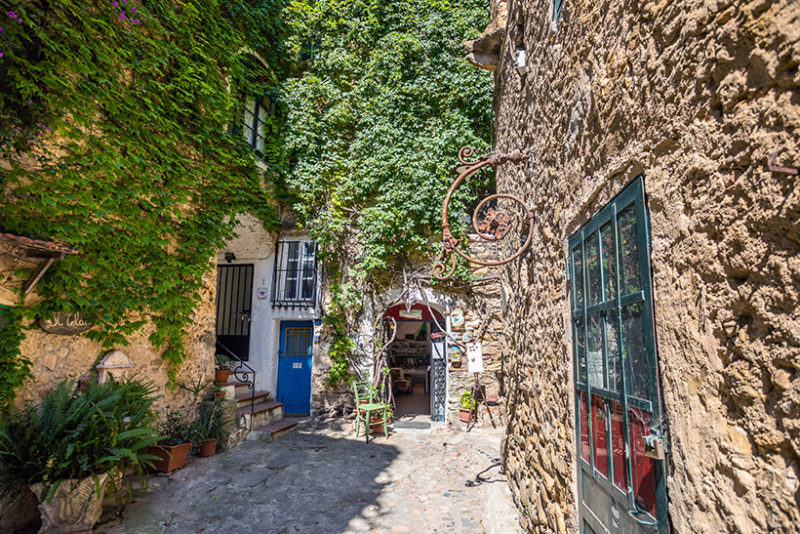
Similarly, Calcata Vecchia near Rome, deserted in the 1930s, eventually attracted a new community of artists, drawn to it as a bohemian idyll for its spirit of desolate romance. Today, its peaceful streets are a delight to explore. Visitors will also find appealing cafés and bars to while away a quiet afternoon as an escape from the bustle of Italy’s capital.
Bussana and Calcata aren’t the only places to find a new lease of life in modern times. Pentedattilo, meaning ‘five fingers’, is named after the ominous chunks of rock that hang above it. The precarious geographical position of this town in Calabria saw the place deserted for years. But many of its buildings are still in a remarkably good state of repair, and today it has a vibrant programme of tours and events, including an annual summer film festival.
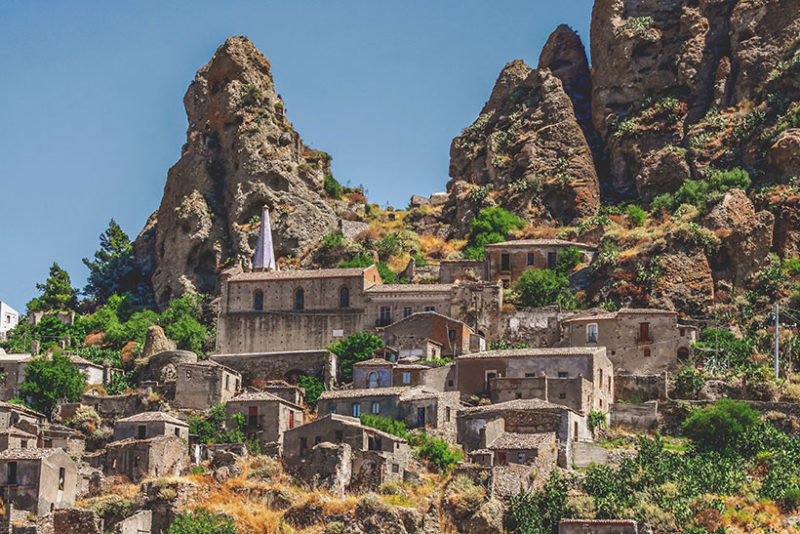
Its vibrant present can be attributed to the Pro Pentedattlio Association, founded in 1996. This social and cultural organisation is dedicated to promoting the image of the town’s forgotten sites and maintaining its legacy.
A different Italy: Visiting the silent towns
In Umbria, the medieval hamlet of Castello di Postignano has been reborn as a luxurious destination both for new residents and visiting guests. Originally abandoned in the 1960s, a project to sympathetically restore the village began in 1994.
The hamlet has been thriving since 2014, boasting restaurants, shops and museums, along with high-spec private dwellings and hotel rooms, plus a swimming pool and spa.
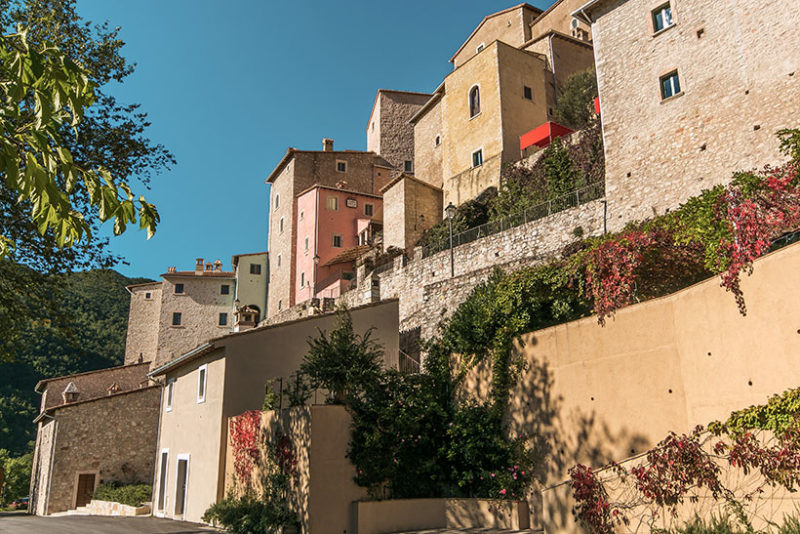
In this case, its modern iteration is a far cry from its abandoned state. It serves as a fine example of the potential to restore ghost towns with a sympathetic eye, where the will (and the bank balance) permits. Though most of Italy’s ghost towns haven’t benefitted from this kind of luxury restoration, they are still worth a visit.
When you wander off the beaten track and explore one of these places, you’ll find yourself connecting to a different Italy, where the madding crowds are a distant concern. Here, the silent buildings offer a surreal, meditative experience that visitors won’t find at Italy’s teeming tourist honeypots.
Beyond the mainland: Italy’s three ghost islands
1. Poveglia, Venice
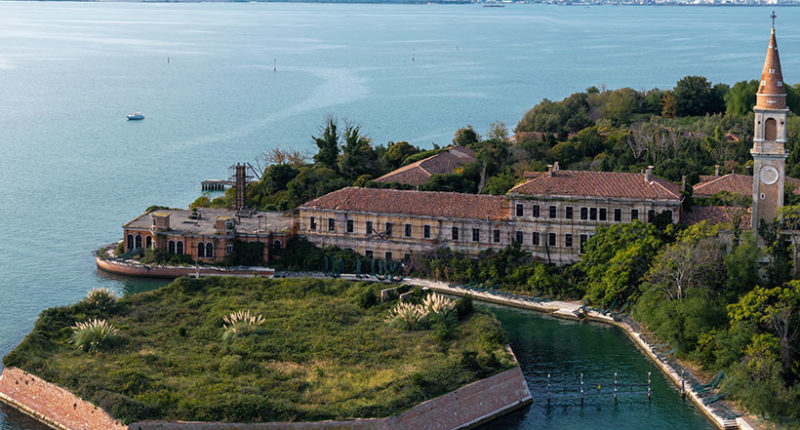
Poveglia was a peaceful community until its residents fled the Genoese invasion of Venice in the 14th century. Now considered one of the most haunted places in the world.
Located in the Venetian lagoon, it remained uninhabited until 1793, when it became a quarantine station for plague victims. It remained this way until 1814, and later housed a controversial asylum for the mentally ill.
Today, the island remains uninhabited, though torrid tales about its history and its reputation as a cursed place live on.
2. Rovigliano, Amalfi Coast
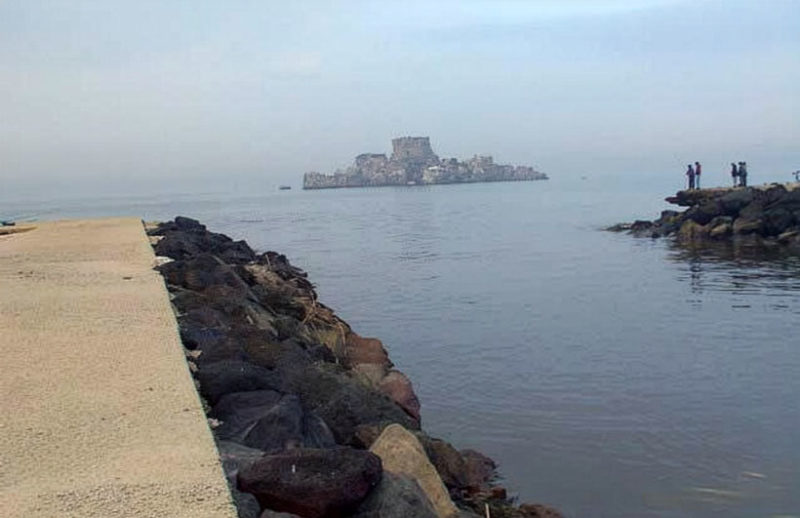
More of a tiny islet than a proper island in any real sense, and sometimes referred to as Il Castello dello Scoglio (the Rock) di Rovigliano, this rugged little piece of land juts out of the water at the mouth of the River Sarno in the Gulf of Naples.
Legend has it that the islet was formed when Hercules detached the top from Mount Faito and flung it into the sea. Over the centuries, the Rock has been inhabited as a trading post, monastery and military base, but today it stands empty, a dramatic flourish peeking from the water.
3. Gaiola, Naples
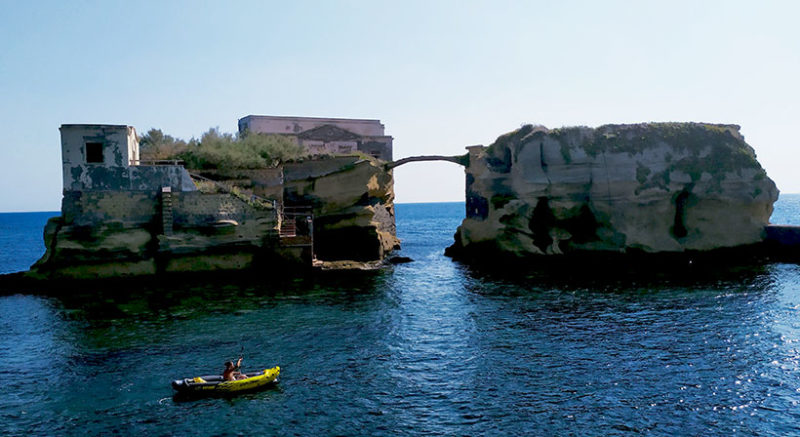
Off the coast of Naples, a thin stone archway connects two rocks, giving Gaiola Island its unique, romantic silhouette. Its legend, however, is one of curses and ill fortune. In the 19th century, it was inhabited by a hermit known as ‘The Wizard’ until it was bought by a rich fishing magnate in 1871.
After his company went bankrupt, he left, and misfortune has dogged every subsequent resident. Tragedies range from the untimely deaths of the island’s Swiss owners in the 1920s to the industrialist who committed suicide in a Swiss asylum in the 1950s.
Want to explore more of Italy? Take a tour of the most captivating Italian castles
Written by Jenny Oldaker for Italia! #211 (Oct/Nov 2024)
